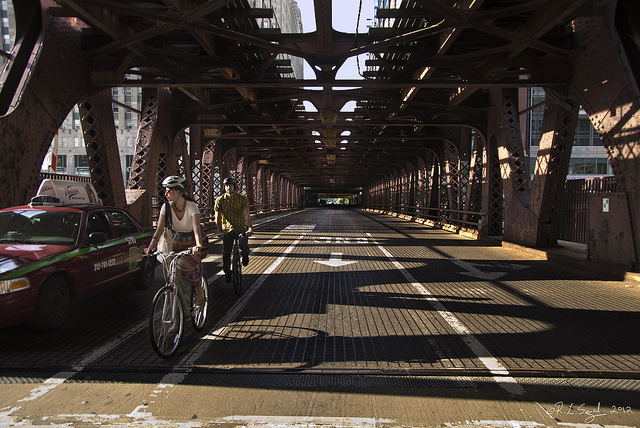Commuters Pedal to Work on Their Very Own Superhighway
A Green Light for Copenhagen's Cyclists: A new initiative in Copenhagen aims at building miles of bicycle highways that offer cyclists a safer and faster way to commute.
By SALLY McGRANE
Published: July 17, 2012
COPENHAGEN — Picture 11 miles of smoothly paved bike path meandering through the countryside. Largely uninterrupted by roads or intersections, it passes fields, backyards, chirping birds, a lake, some ducks and, at every mile, an air pump.
Jan Grarup for The New York Times
An 11-mile-long path called a bicycle superhighway has opened between Copenhagen and Albertslund, a western suburb.
For some Danes, this is the morning commute.
Susan Nielsen, a 59-year-old schoolteacher, was one of a handful of people taking advantage of Denmark’s first “superhighway” for bicycles on a recent morning, about halfway between Copenhagen and Albertslund, a suburb, which is the highway’s endpoint. “I’m very glad because of the better pavement,” said Ms. Nielsen, who wore a rain jacket and carried a pair of pants in a backpack to put on after her 40-minute commute.
The cycle superhighway, which opened in April, is the first of 26 routes scheduled to be built to encourage more people to commute to and from Copenhagen by bicycle. More bike path than the Interstate its name suggests, it is the brainchild of city planners who were looking for ways to increase bicycle use in a place where half of the residents already bike to work or to school every day.
“We are very good, but we want to be better,” said Brian Hansen, the head of Copenhagen’s traffic planning section.
He and his team saw potential in suburban commuters, most of whom use cars or public transportation to reach the city. “A typical cyclist uses the bicycle within five kilometers,” or about three miles, said Mr. Hansen, whose office keeps a coat rack of ponchos that bicycling employees can borrow in case of rain. “We thought: How do we get people to take longer bicycle rides?”
They decided to make cycle paths look more like automobile freeways. While there is a good existing network of bicycle pathways around Copenhagen, standards across municipalities can be inconsistent, with some stretches having inadequate pavement, lighting or winter maintenance, as well as unsafe intersections and gaps.
“It doesn’t work if you have a good route, then a section in the middle is covered in snow,” said Lise Borgstrom Henriksen, spokeswoman for the cycle superhighway secretariat. “People won’t ride to work then.”
For the superhighway project, Copenhagen and 21 local governments teamed up to ensure that there were contiguous, standardized bike routes into the capital across distances of up to 14 miles. “We want people to perceive these routes as a serious alternative,” Mr. Hansen said, “like taking the bus, car or train.”
The plan has received widespread support in a country whose left- and right-leaning lawmakers both regularly bike to work (albeit on slightly different models of bicycle).
Riding on the first superhighway, which grew more crowded as it neared the city, Marianne Bagge-Petersen said she was heading to a support group for job seekers. “I think it’s very cool,” she said, noting that the path allowed her to avoid roads with more car traffic. “Taking the bike makes me feel good about myself. I’m looking for a job, and if I don’t get out, it’s going to be a very long day.”
The Capital Region of Denmark, a political body responsible for public hospitals as well as regional development, has provided $1.6 million for the superhighway project.
“When we look at public hospitals, we look very much at how to reduce cost,” said a regional councilor, Lars Gaardhoj, who had just picked up his three small children in a cargo bike decorated with elephants. “It’s a common saying among doctors that the best patient is the patient you never see. Anything we can do to get less pollution and less traffic is going to mean healthier, maybe happier, people.”
In Denmark, thanks to measures like the superhighway, commuters choose bicycles because they are the fastest and most convenient transportation option. “It’s not because the Danes are more environmentally friendly,” said Gil Penalosa, executive director of 8-80 Cities, a Canadian organization that works to make cities healthier. “It’s not because they eat something different at breakfast.”







